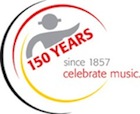Music Theory 4 - Ex 1.14
Good morning David,
In bar 8 of Ex 1.4, please can you explain why the pick up A to G, A is a passing tone, yet in bar 11 the pick up
A B D, A is an appogiature. Thank you for your help.
Paul
No worries.
Passing Tones and Neighbor Tones, though commonly placed on weak beats (commonly beats 2 and 4 as well as upbeats) can be played on strong beats to grab attention. The tension built by hitting a Non-Chord Tone is an important part of Blues music. When playing a Non-Chord Tone that resolves to a Chord Tone, it’s called an Appoggiatura (App). This most commonly happens on a chord change (Beat 1 is the Non-Chord Tone, that resolves to a chord tone).
In regards to your question... the notes you're speaking of don't match the music bars you speak of. I'll guess at what you're asking for here...
In Bar 6, last two beats (pickup to Bar 7) there are Bb A G. Bb is the flat-7th of the IV7 Chord. G is the 5th of the IV7 Chord (and root note of the upcoming I7 Chord). A is a Non-Chord Tone and is passing from Chord Tone (Bb) to Chord Tone (G), so it is a Passing Tone.
At the end of Bar 11 there is A B D, leading to G. A is started on a strong beat (downbeat) and is not proceeded by anything. It resolves quickly to B (3rd of the I7 Chord), so this meets the definition of an Appoggiatura.


Hello Paul. I'm looking at Music Theory Study 4, Example 1.4 and I'm not seeing what you're describing (it's Hole Changes). Please point me again to the section you're referring to. Thank you.